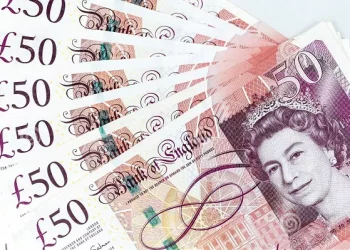The peso is one of the most widely recognized currencies in the world, used in multiple countries across Latin America and Asia. As a vital part of global trade and foreign exchange markets, understanding the peso’s origins helps traders, economists, and historians appreciate its significance in financial history. The question, “When was the first peso?” is not just about a date—it is a journey through time, colonial rule, and economic evolution.
The Birth of the Peso: 15th and 16th Centuries
The term “peso” originates from the Spanish word for “weight” and was first used to describe a standard unit of silver currency in Spain. The peso, also known as the Spanish dollar or “piece of eight,” was introduced during the reign of the Catholic Monarchs Ferdinand and Isabella in the late 15th century.
During the early 16th century, following Spain’s expansion into the New World, the peso became the dominant currency of Spanish colonies in the Americas and the Philippines. The most widely known early version of the peso was the Spanish silver dollar, minted from silver extracted from the vast mines of Potosí (modern-day Bolivia), Mexico, and Peru. These pesos were used as international currency for trade between Europe, the Americas, and Asia.
The Peso in Colonial America and Asia
The Spanish peso became one of the first truly global currencies. It was widely accepted not only in Spanish territories but also in China, Southeast Asia, and North America. In China, where silver was highly valued, the Spanish peso was a preferred medium of exchange. The famous Manila-Acapulco Galleon Trade, which lasted from the late 16th century to the early 19th century, further solidified the peso’s role in global commerce.
In the United States, before the establishment of the dollar, the Spanish peso was commonly used in trade and was even legal tender in some parts of the country until the 19th century. The American dollar’s symbol ($) is believed to have originated from the Spanish peso, as early representations of the peso sign closely resemble the modern dollar sign.
The Peso’s Role in Independent Latin American Nations
After the wars of independence in Latin America during the early 19th century, many newly independent nations sought to establish their own monetary systems. However, given the long-standing presence of the Spanish peso, many countries continued to use it as a model for their national currencies. Countries such as Mexico, Argentina, Chile, Colombia, and the Philippines retained the peso as their official currency, albeit with localized modifications and different values over time.
For instance, Mexico established its first national currency, the Mexican peso, in 1821 following its independence from Spain. The Mexican peso became a key currency in global trade, given the country’s extensive silver reserves. Similarly, Argentina’s peso was introduced in the 19th century, replacing older colonial currencies.
The Transition to Fiat Currencies
During the 20th century, most peso-using nations transitioned from precious metal-backed currencies to fiat money. This shift allowed for greater monetary policy control, especially during times of economic crisis or inflation. Countries like Mexico abandoned the silver standard in the early 20th century, followed by Argentina and others.
The value of the peso has fluctuated over time, influenced by economic policies, inflation, and exchange rates. In some cases, hyperinflation and economic instability led to currency revaluations, such as in Argentina, where multiple iterations of the peso have been introduced since the 20th century.
The Peso in the Foreign Exchange Market
Today, several currencies bearing the name “peso” are actively traded in the foreign exchange (forex) market. The most significant include:
Mexican Peso (MXN): One of the most traded emerging market currencies, highly liquid and often used as a proxy for Latin American economic trends.
Argentine Peso (ARS): Known for its volatility, influenced by Argentina’s economic policies and inflation rates.
Philippine Peso (PHP): A stable currency in Southeast Asia, reflecting the Philippines’ growing economy.
Colombian Peso (COP) and Chilean Peso (CLP): Both are used in South American trade and investment.
For forex traders, understanding the peso’s historical significance and current market dynamics can provide insights into trends, volatility, and potential trading opportunities.
Conclusion
The peso’s history is a testament to its global impact, from the Spanish Empire’s silver trade to its modern role in international finance. While the first peso emerged in the 15th and 16th centuries under Spanish rule, its legacy continues today in the forex market and national economies worldwide. Whether as a store of value, a medium of exchange, or a speculative asset in trading, the peso remains a vital part of financial history and contemporary markets.
Related Topics:



























